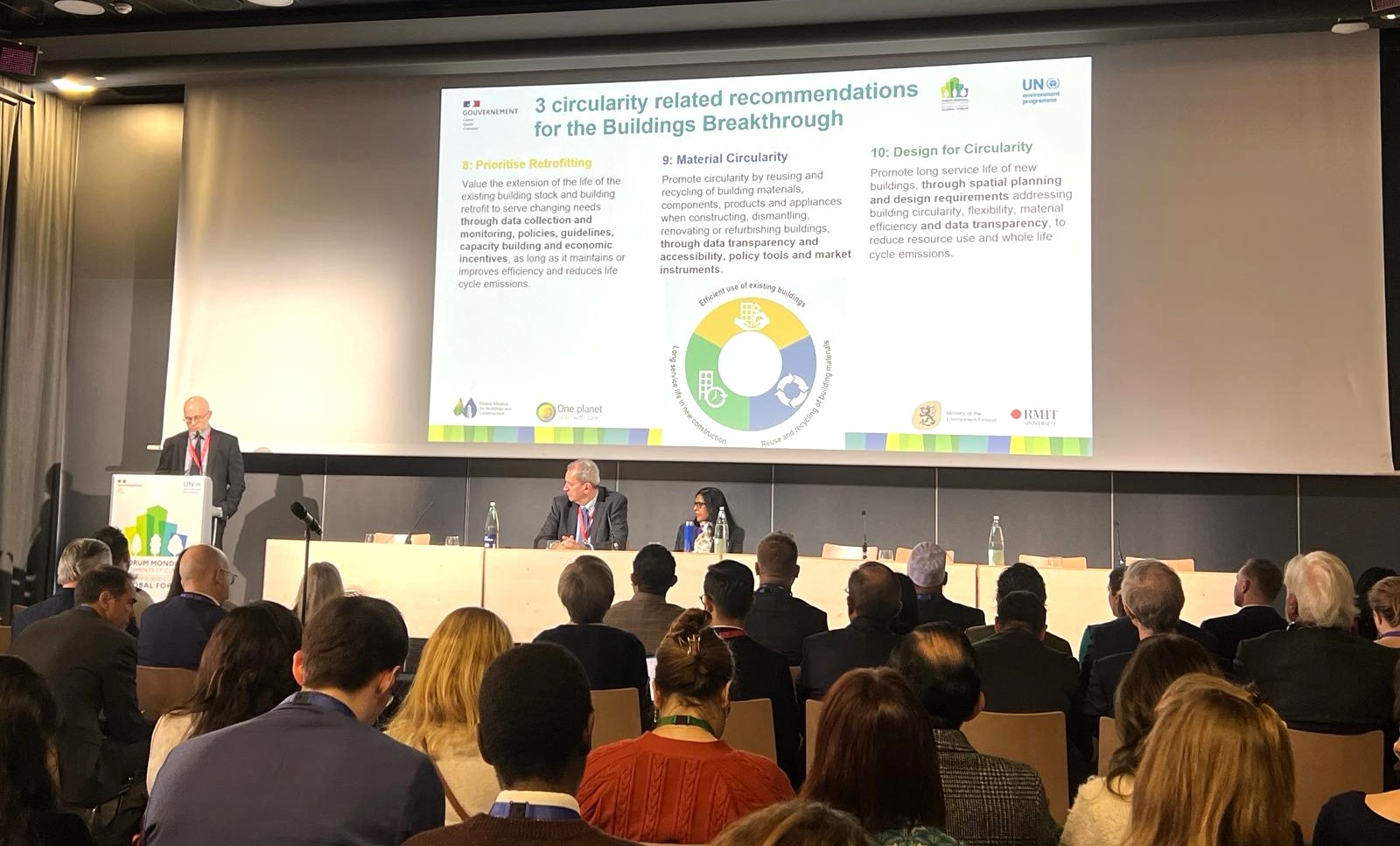OECD's Environmental Management System (EMS)
The OECD has been committed to limiting the environmental impact of its work for years. In 2014, it formalised the process through the introduction of Greening, a project run by a specialised team entrusted with the responsibility of steering the Organisation towards environmentally sustainable practices. In January 2018, the Secretary-General of the OECD joined the UN’s “Carbon Neutral Now” initiative and committed a pledge to achieve carbon neutrality by 2020.
Implement a strong Environmental Management System (EMS) that sets processes and practices that enable the Organisation to reduce its environmental impacts and to implement its environmental vision.
Achieve carbon neutrality by 2020 in a period of under two years, by promoting efficiency and behavioural change. The Organisation had improve its performance on the sustainability scale. With a corporate target of 100% carbon neutrality by 2020, the OECD developed an environmental sustainability program around the ‘assessment, launch and entrench’ framework.
Phase 1 >> Assessment to examine the contours of the OECD’s sustainability domain and the direct impact of its work on the environment. Through this assessment, the OECD had a clear picture of the generated volume of emissions, and was able to set concrete goals. A strategic roadmap with well-defined performance targets and indicators was laid out, with energy, water, waste, plastic, carbon emissions and biodiversity being the focal points. This assessment helped to create awareness on the proposed targets, and to build momentum among employees.
Phase 2 >> Launch of a targeted engagement strategy with a focus that included stakeholders in a manner that they adopt the vision as a purpose that they truly connect with and build ownership. The Greening Community at the OECD provides employees with a platform where they can share ideas, feedback and questions, thereby enriching the initiatives with valuable inputs and subsequently resulting in a higher uptake. Another example is the initiative “Bring your own Mug”, where employees were given with a small financial incentive to reduce their use of paper cups, accounting for a reduction of 5.5 tons of paper cup waste.
Phase 3 >> Entrench sustainability. This has been possible at the OECD through the transparency maintained in sharing information on the impact of initiatives through ongoing employee communications, the annual Greening report and ongoing engagement on the discussion forums. In addition to internal initiatives, the OECD has been working with other international agencies to share and exchange best practices.
IMPACT – Key figures:
> Energy consumption per square meter reduced by 28% since 2010
> Water consumption per staff member has decreased by 34% since 2010
> The OECD now recycles about 53% of its waste; 47% of energy is recovered
> An equivalent of 205 tonnes of paper saved
> Emissions per staff reduced by 16% since 2010
> Remote conferencing use increased by 63% since 2014
> OECD buildings are High Quality Environmental certified
> Introduction of environmental criteria for procurement processes
> 100% of energy purchased is green
> ISO 14001certified in 2019
We acknowledge that the sustainable transformation requires continuous efforts and actions. In this sense, the OECD ensures continuous improvement of the suitability, adequacy and effectiveness of its EMS to enhance environmental performance via annual external audits. These are the prerequisite for obtaining and maintaining the ISO 14001 certification, which is valid for a period of three years.
External source(s)
Project start date
17/01/2020
Project end date
17/01/2020

